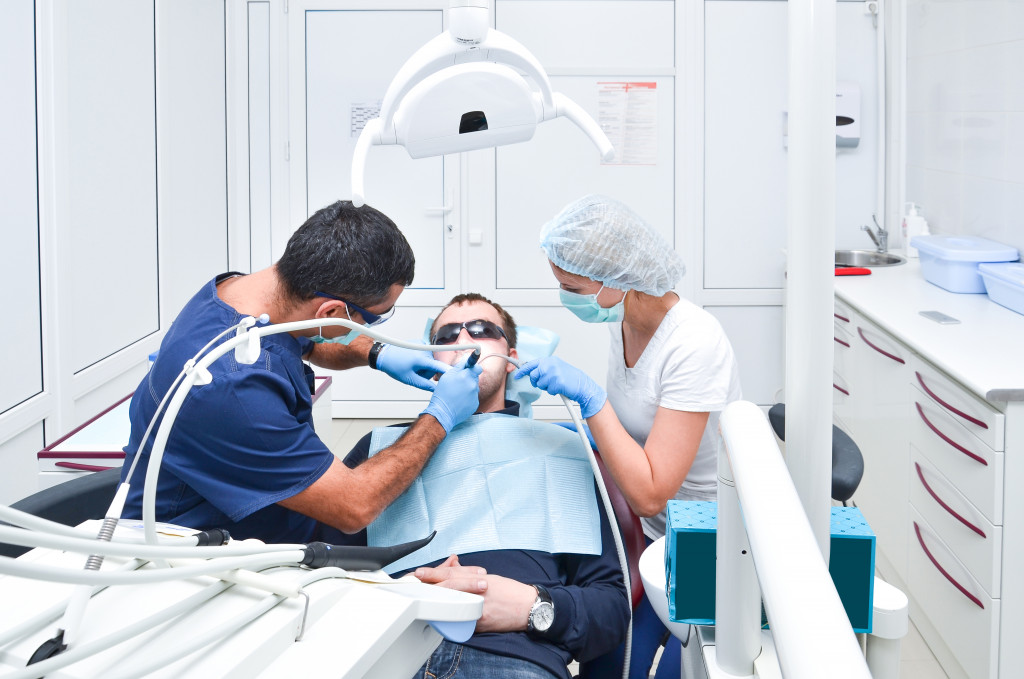The dental industry is changing. With new innovations in dental technology, patients are now able to receive quicker, more accurate diagnoses and treatments than ever before. Dentists are also able to use technology to improve their workflows and provide better patient care. It’s clear that technology has a positive impact on the dental industry, and this trend will likely continue in the years to come.
This article will explore six ways in which technology is changing the dental industry and discuss some of the most significant technological innovations that are making a difference. So, let’s take a look at how technology influences the future of the dental industry.
1. Quicker, More Accurate Diagnoses
Thanks to advances in dental technology, dentists can now make quicker and more accurate diagnoses than ever before. In the past, dentists had to rely on X-rays and manual examinations to identify problems within the mouth. However, X-rays can be tricky to interpret and are often limited in their ability to show small details.
Now, dentists have access to 3D imaging technology, which provides a more comprehensive view of the mouth and teeth. This technology is particularly useful for identifying problems that might not be visible with traditional X-rays, such as small cracks or fractures.
3D imaging is also valuable for planning dental procedures. By having a clear view of the mouth before a procedure, dentists can make sure that they are prepared and have all the necessary tools on hand. This helps to ensure that procedures go smoothly and that patients experience fewer complications.
2. Improved Workflows
In addition to helping with diagnoses, technology can also improve workflows in the dental office. For example, many dentists now use digital charting to keep track of their patients’ dental histories. This allows them to quickly and easily pull up information on past procedures, medications, and allergies.
Digital charting is just one example of how technology can help to improve workflows in the dental office. Other examples include electronic claim submissions, online appointment scheduling, and paperless charting. By taking advantage of these technologies, dentists can save time and improve their efficiency.
3. Better Treatment Planning
With technology, dentists can now create better treatment plans for their patients. In the past, treatment planning was often based on guesswork and intuition. However, thanks to advances in dental technology, dentists can now create comprehensive treatment plans tailored to each patient.
This is possible because of the increased accuracy of diagnosis made possible by 3D imaging technology. By getting a clear view of the mouth, dentists can identify all the problems that need to be addressed and develop a plan that will address all of these issues.
4. Improved Patient Communication
Another way that technology is changing the dental industry is by improving patient communication. Now dentists can communicate anywhere, anytime with their patients by using video conferencing tools, email, and text messaging. This allows them to answer questions, give advice, and provide support outside of the dental office.
It also makes it easier for patients to contact their dentists when they have questions or concerns. Also, with websites, patients can easily book appointments and find information about their dental health. If you want to make your dental website rank higher in search results, then hire a professional SEO expert for your dental website.

5. Enhanced Patient Education
In addition to improved communication, technology is also enhancing patient education. In the past, patients often had to rely on their dentists to learn about their dental health. However, thanks to the internet, patients can now access a wealth of information about their teeth and gums.
This means that patients can be more proactive about their oral health and take steps to prevent problems before they occur. It also allows them to make more informed decisions about their treatment options.
6. Increased Access to Care
Finally, technology is also increasing access to care. In the past, many people didn’t have dental insurance or couldn’t afford to pay for dental care out of pocket. However, thanks to new dental technologies, such as teledentistry, more people are now able to get the dental care they need.
Teledentistry is a new way of providing dental care using video conferencing tools. This allows dentists to provide care to patients who live in rural areas or who don’t have access to a dental office.
Technology is changing the dental industry in several ways. From improved diagnosis and treatment to enhanced patient education, technology positively impacts the way dentists practice. We can expect to see even more changes in the years to come as new technologies are developed and adopted. So, if you want to stay ahead of the curve, make sure to keep up with the latest dental technology news.





